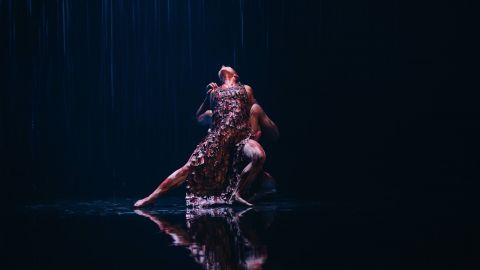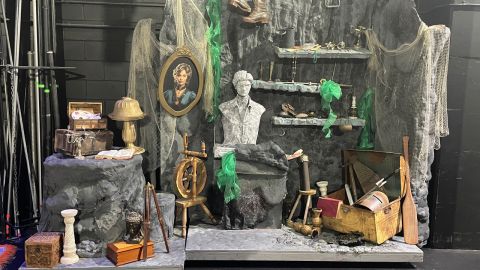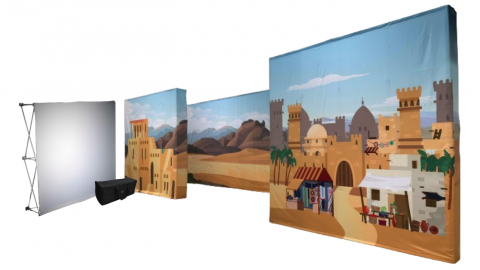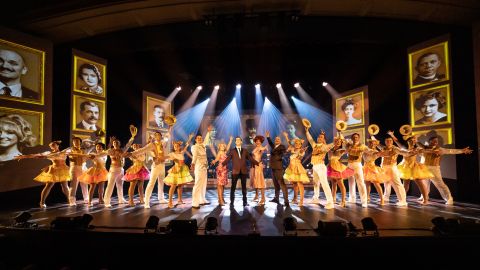Dressing Elizabeth I
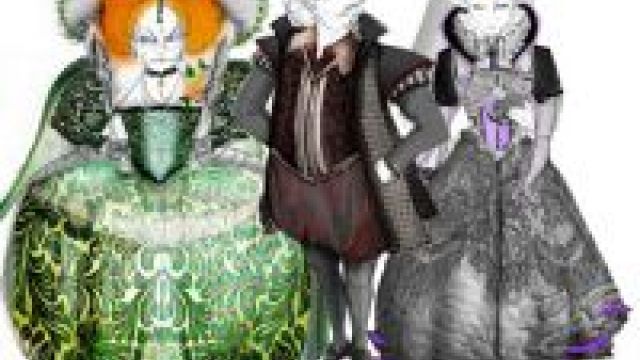
Stage Whispers interviews Anna Cordingley, Designer of Malthouse Theatre’s Elizabeth
What is the brief for the costume design?
Dario Fo’s Elizabeth is a manic, naughty, rollicking and sometimes harrowing piece, which throws itself from tragedy to comedy and back again. My brief is to echo its playfulness and excess in my design, while drawing on the style, form and structure of sixteenth century regalia. Exact historical accuracy isn’t a necessary burden but I do absolutely wish to evoke a rich, opulent Elizabethan world.
Can you please give a brief description of the costume and materials?
The costume designs printed here (Shakespeare, Mary Queen of Scots, Elizabeth) are all decadent in fabric and profile. Shakespeare appears in hose, breeches, doublet with wings but his colours are more stylized than historical portraits communicate. The fabric I used included Damasks, rich brocades and even blends with Lurex. Mary’s character appears in Elizabeth’s nightmares, so I’ve created her as threatening and supercilious, derived from a late sixteenth century portrait. The dress is black with violet trims and aiguillettes. Her rosary beads are prominent; her ruff is stiff and upon her head stands the iconic dipped coif with veil, exaggerated and menacing. Elizabeth is dressed from the bottom up in shifts, corset, farthingale, hip pads, rolls and ruffs, bodice, skirt and overskirt, full standing collar, wig, crown and cape and all in a determined shade of emerald. The audience will see Elizabeth in varying states of undress for the most part: her complete outfit is reserved for only a moment.
How do you source and select of material?
Lots of sampling trips! If time permits I like to go searching with the head seamstress because a second opinion is fabulously helpful, especially when it’s technically savvy.
What are the inspirations / influences behind the designs?
The Elizabethan era is certainly inspiration enough, but as the characters are constantly dressing, undressing and cross-dressing, I’ve looked to Vivienne Westwood for something of a deconstruction of the classics. I adore her work; the rough-hewn and the delicate alongside one another. Indeed, even Viv herself evokes something of Lizzy.
What statement does the costume make about the character?
Elizabeth is a viper. Mary is a bad omen. Shakespeare is himself until the En Femme takes hold…
How is the design influenced by the fact that it is a costume for an actor in performance? Were there particular needs in this regard which you had to bear in mind?
Sixteenth century dress, with excesses of undergarments, over garments and stiff decoration couldn’t have been pleasant even then. Add running around on a stage revolve, recalling lines, blocking and directorial nuance … a near impossible task! So I’ll avoid presenting each costume as a complete ensemble and, where possible, substitute a finer contemporary fabric for the authentic, heavy piles.
What are the challenges in the actual making of the costumes?
The greatest challenge is working ahead of ourselves enough to allow the actors sufficient time with the costumes in the rehearsal room.
Any interesting little secrets about the costumes?
Only that one should never be too quick to discard eccentric upholstery fabrics when looking for small remnants with a potent pattern …
Elizabeth: Almost by chance a woman, played at the Malthouse Theatre, Melbourne, from April 3 - 24, 2010.
Images - Anna Cordingley.

